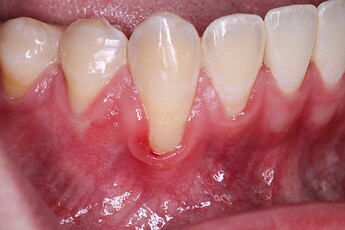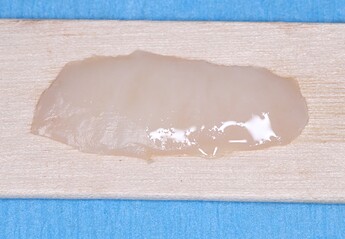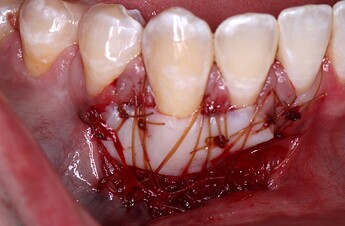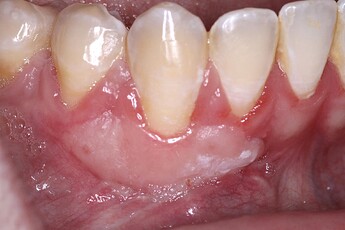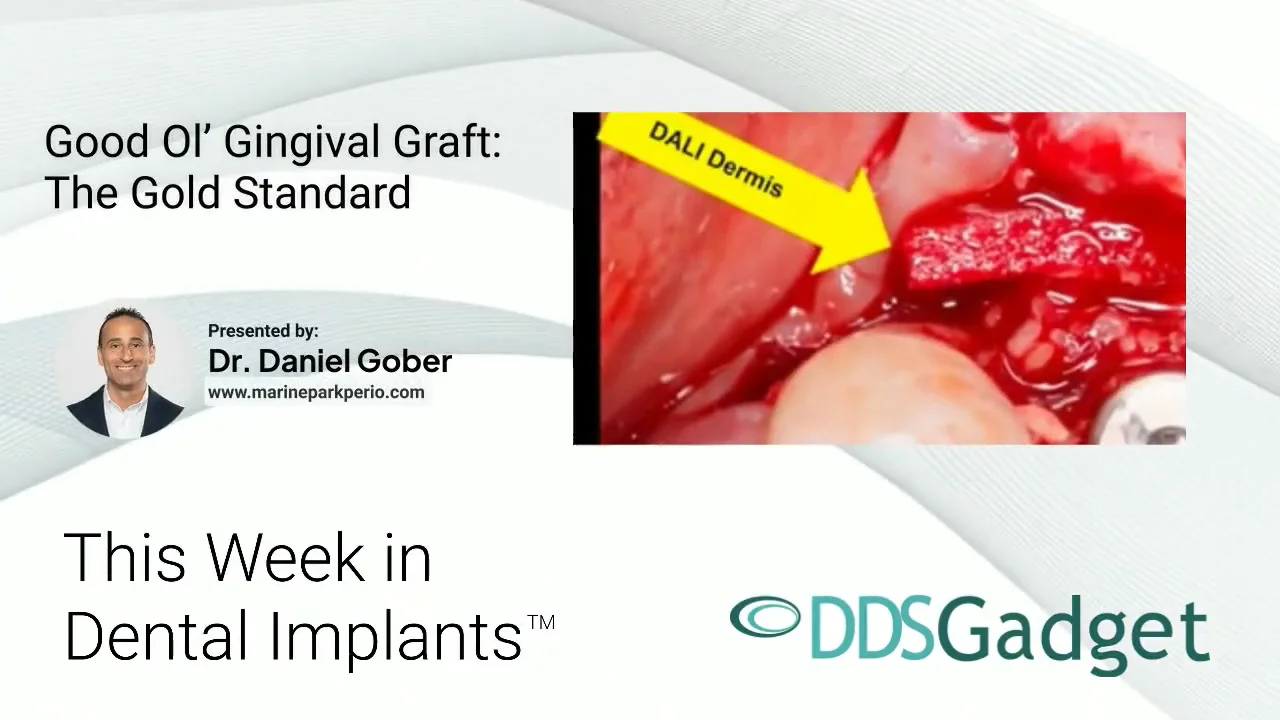This Week in Dental Implants, we are presenting a case from Dr. Daniel Gober with an autogenous graft. This is a nice follow-up case to our previous Free Gingival Graft Summary post where we addressed some of the research surrounding the alternatives to autogenous grafts, and presented Dr. Gober’s case utilizing DALI Dermis.
As is well known, autogenous grafts, when appropriately indicated, remain the gold standard when it comes to grafting. Gingival augmentation is no exception:
Autogenous gingival grafts are still considered to be the “gold standard” procedure with unmatched success rates and clinical success when gingival augmentation procedures are required. 1
In order to measure the effectiveness of free gingival grafts, the most accepted measure is the outcome in the width of keratinized tissue (KT). While alternatives to autogenous grafts do result in an increased width of KT, studies show that autogenous grafts were superior 2,3:
Patients who were treated with soft tissue alternatives gained 1.39 mm less KT width compared with the patients who received free gingival graft.2
Of course, there are some potential downsides of autologous grafting, and so when not indicated, substitutes, like DALI Acellular Dermis, can be considered.
ADM allograft has resulted in sufficient increase in width of attached gingiva although lesser than FGG. It can be concluded that ADM allograft can be used as an alternative to FGG in increasing width of attached gingival in certain clinical situations. 3
Case Presentation
Case Presented By: Dr. Daniel Gober, Marine Park Perio
Tooth #27 presented with an extensive recession and mucogingival defect. A free palatal autogenous graft was harvested and tacked to the recipient bed with chromic gut sutures. After 4 months, root coverage and a large increase in attached keratinized tissue was achieved.
Case Video
Research
1. Periodontal soft tissue non-root coverage procedures: a systematic review from the AAP Regeneration Workshop., David M Kim , Rodrigo Neiva , Journal of periodontology. Volume: 86, Issue: 2 Suppl, 2015
BACKGROUND
Gingival augmentation procedures around natural teeth and dental implants are performed to facilitate plaque control, to improve patient comfort, to prevent future recession, and in conjunction with restorative, orthodontic, or prosthetic dentistry. The aim of this study is to answer the most common questions related to this treatment modality based on the most relevant and current knowledge in the field.
METHODS
Two reviewers worked to answer the five most common and clinically relevant questions with supporting literature to understand the role of gingiva around teeth. 1) What circumstances require an increased zone of keratinized tissue (KT), or is KT important? 2) What is the ideal thickness of an autogenous gingival graft? Is a thick autogenous gingival graft more effective than a thin autogenous gingival graft? 3) What are the alternatives to autogenous gingival grafting to increase the zone of attached gingiva? 4) Does orthodontic intervention affect soft tissue health and dimensions? 5) What is the patient-reported patient outcome for minimal KT compared with that for an enhanced zone of KT? An extensive literature search was performed using PubMed, the Cochrane Oral Health Group Specialized Trials Registry (the Cochrane Library), and the most respected journals in the field.
RESULTS
Although gingival augmentation procedures were first introduced in 1960s, there have not been in-depth comparative studies examining the five questions that have been proposed by the authors. Lack of relevant systematic reviews and randomized clinical trials (RCTs) on this topic do not allow authors to answer those questions with a strong level of evidence. However, the following can be recommended after reviewing case reports and case series on these topics. 1) There is enough clinical evidence to support maintaining an adequate band of gingiva for intracrevicular margin restoration. 2) Thick grafts do not appear to result in better clinical outcomes than thin grafts. Thick grafts are likely to result in more primary contraction, whereas thin grafts tend to be prone to secondary contraction. 3) Viable alternative treatment modalities are currently available that are capable of providing KT augmentation without the need for palatal donor tissue. 4) Appropriately applied orthodontic forces do not cause permanent damage to a healthy periodontium. The probability of recession during tooth movement in thin biotype is high to justify gingival augmentation when the dimension of gingiva is inadequate. In addition, cases in which there will be a facial tooth movement outside of the alveolar process need to be considered for a gingival augmentation procedure. 5) Although the articles that have been published on this topic did not consider patient-reported outcomes and esthetics as part of the overall treatment success assessment, patients who have received alternative treatment modalities that did not depend on palatal tissue harvesting appear to have reported more satisfaction and less discomfort after treatment.
CONCLUSIONS
Autogenous gingival grafts are still considered to be the “gold standard” procedure with unmatched success rates and clinical success when gingival augmentation procedures are required. However, tissue-engineered materials may offer viable options to palatal tissue harvesting for gingival augmentation. KT augmentation may prevent the development and progression of gingival recession, especially when restorative margins may interact with the periodontium and/or orthodontic treatment is indicated. Patient-reported outcomes should be considered for future studies on this topic. Additional RCTs and systematic reviews are needed to support these conclusions.
Read More
2. Clinical Outcomes of Comparing Soft Tissue Alternatives to Free Gingival Graft: A Systematic Review and Meta-Analysis ., Irina F Dragan , Lucrezia Paterno Hotlzman , Nadeem Y Karimbux , Rebecca A Morin , Seyed Hossein Bassir , The journal of evidence-based dental practice. Volume: 17, Issue: 4, 2017
OBJECTIVES
This systematic review and meta-analysis aimed to compare clinical outcomes and width of keratinized tissue (KT) around teeth, following the soft tissue alter- natives and free gingival graft (FGG) procedures. The specific graft materials that were explored were extracellular matrix membrane, bilayer collagen membrane, living cellular construct, and acellular dermal matrix.
METHODS
Four different databases were queried to identify human controlled clinical trials and randomized controlled clinical trials that fulfilled the eligibility criteria. Relevant studies were identified by 3 independent reviewers, compiling the results of the electronic and handsearches. Studies identified through electronic and handsearches were reviewed by title, abstract, and full text using Covidence Software. Primary outcome in the present study was change in the width of KT. Results of the included studies were pooled to estimate the effect size, expressed as weighted mean differences and 95% confidence interval. A random-effects model was used to perform the meta-analyses.
RESULTS
Six hundred thirty-eight articles were screened by title, 55 articles were screened by abstracts, and 34 full-text articles were reviewed. Data on quantitative changes in width of KT were provided in 7 studies. Quantitative analyses revealed a significant difference in changes in width of KT between patients treated with soft tissue alternatives and patients treated with FGGs (P < .001). The weighted mean difference of changes in the width of KT was 21.39 (95% confidence interval: 21.82 to 20.96; heterogeneity I 5 70.89%), indicating patients who were treated with soft tissue alternatives gained 1.39 mm less KT width compared with the patients who received free gingival graft.
CONCLUSIONS
Based on the clinical outcomes, the results of this systematic review and meta-analysis showed that soft tissue alternatives result in an increased width of KT. Patients in the soft tissue alternatives group obtained 1.39 mm less KT compared with those in the FGGs group.
Read More
3. Comparative evaluation of free gingival graft and AlloDerm(®) in enhancing the width of attached gingival: A clinical study., Chitra Agarwal , A B Tarun Kumar , Dhoom Singh Mehta , Contemporary clinical dentistry. Volume: 6, Issue: 4, 2015 Oct-Dec
BACKGROUND The presence of an adequate width of keratinized tissue is important to maintain a healthy dentogingival junction. In case of inadequate width of attached gingiva, the gingival augmentation procedure has been performed classically using the patient's own masticatory mucosa and more recently, using an acellular dermal allograft as the donor material.AIMS
The aim of the clinical study was to evaluate and compare the effectiveness of free gingival graft (FGG) and acellular dermal matrix (ADM) allograft in the ability to increase the zone of attached gingiva.
MATERIALS AND METHODS:
Fifteen patients with 30 sites showing the inadequate width of attached gingiva (≤1 mm) were enrolled for the split-mouth study. The width of keratinized gingiva and other clinical parameters were recorded at baseline and 12(th) month postoperatively.
STATISTICAL ANALYSIS
The difference in clinical parameters within the group was assessed by Wilcoxon signed rank test. However, Mann-Whitney U-test was used to analyze the differences between test and control groups.
RESULTS
The width of attached gingiva increased significantly (P < 0.01) following both the treatments but comparatively lesser gain with ADM allograft (2.13 mm vs. 4.8 mm). ADM site had significantly more shrinkage (76.6%) than FGG site (49.7%). Though FGG was found to be more effective, clinicians can prefer ADM allograft because of its certain advantages over the FGG.
CONCLUSION
ADM allograft has resulted in sufficient increase in width of attached gingiva although lesser than FGG. Considering the disadvantages of FGG, it can be concluded that ADM allograft can be used as an alternative to FGG in increasing width of attached gingival in certain clinical situations.
Read More
